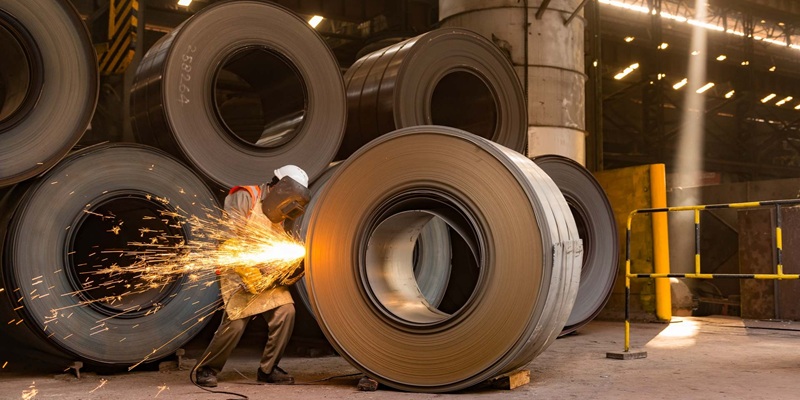Schedule a Call Back
Opportunities in Defence Indigenisation for Entrepreneurs
 Technical Articles
Technical Articles- Jun 11,15
In the past few decades, India has landed up with a huge inventory of old defence equipment which is unserviceable on account of one or the other sub-system or component, no longer working, spare parts being no longer available and there being scarce resources to replace those combat systems. As an erstwhile Air Force officer, I will write about opportunities in the Air Force. Similar opportunities will certainly be available in the Army and Navy as well.

From OSA-AKM amphibious combat vehicles carrying anti-aircraft surface to air missile systems, to early warning radars to the Pechora air-defence, surface to air missile system, there are many systems the Air Force would like to keep serviceable till the Government allocates resources to replace those systems.
Most old Russian combat systems are built around electro-mechanical sub-systems. For example, a timer mechanism inside a surface to air missile launcher, carries out a timing sequence of around 20 seconds, actuating contacts at various time intervals, as well as operating a series of potentiometers, whose output goes to an analogue computer. The entire mechanism consists of a gear train that is driven by a DC motor that obviously has to rotate with an accurate speed, so as to allow the gear-train and its various attachments to operate. The DC motor, to adjust timing, has an electromechanical governor at the rear, that cuts out power to the motor if it exceed a preset speed and connects back the power once it comes within the operating range. For those who have worked with microprocessors or microcontrollers, such a timer is actually a trivial device to design and fabricate. The catch is, the redesigned device has to faithfully emulate the electromechanical device in functionality. Its enclosure and mechanical mounting details have to remain the same, to ensure it fits exactly at the same place in the same way as the original. The Air Force, and no doubt the other two services, are on the lookout for entrepreneurs who would like to work with them to indigenise various subsystems.

The indigenisation process is carried out at various Base Repair Depots (BRD), which are specialised in particular equipment. My company has been working with a BRD that specialises in early warning radars and various surface to air missile systems. The indigenisation cell at the BRD floats tenders for the indigenisation of various subsystems and equipment. The lowest tender is then awarded the contract to develop a subsystem. Because this is an activity, which has very few vendors, the Air Force imposes only a small penalty on failure to develop a system after being awarded a contract. This is itself has the potential to cause disruption in the process. One development tender, for example, was won by a person who was a furniture supplier to a particular BRD. Not knowing what he was quoting for, the person just filled up a tender and after award of the contract, went about trying to find people who would execute the project for him! Unable to develop the product, he kept asking for extensions, till a 3-month project extended to 12 months, after which he finally gave up and said he could not supply the goods. The entire re-tendering process took another 6 months, effectively delaying the entire indigenisation process by a year and a half.
Government tenders comprise of a Technical Bid and a Commercial Bid. The technical bid is opened first and evaluated. The vendors who pass in the technical bid then qualify to have their commercial bids opened. The process of evaluating the technical bid, if not done with due diligence by the BRD, can often result in non-serious vendors trying their luck at something clearly outside their abilities, but in the process, vitiating the atmosphere, frustrating serious vendors and in most cases, driving away serious vendors from the scene. It may be a good idea, especially for larger projects, to speak with authorities and insist on the technical bid being evaluated by a Board of Officers. In one case in a BRD, several serious vendors got together and suggested that technical bids be evaluated by a Board of Officers, so that casual vendors are weeded out. Being in the interests of the BRD, such an exercise was put together. All vendors who had quoted were asked to give a technical presentation on how they proposed to design and fabricate the system. The presentation was attended by officers and others with domain knowledge of the equipment being re-designed. The casual vendor was effectively sidelined by a serious application of the technical bid process.
The award for development is a contract that is awarded after the tendering process. The development consists of a development charge and the cost of one prototype. The tender also asks for a future cost of the product, i.e., the cost of the product after the development charges and prototype have been paid for by the Air Force.
After award of a development contract, the Air Force is liberal with time extensions if it is clear that the vendor is stuck on a technical issue and will benefit with a time extension. The work culture is also a pleasure to countenance, because work actually gets done and projects move forward rapidly. After the vendor delivers the prototype, it is tested rigorously with simulators and within the actual equipment. Clearance from the actual user and quality control, results in payment being released to the vendor and a logistics ID to be allotted to the product. Future requirements of the product will automatically be placed via a purchase order, on the vendor.
This article concerns itself only with ground equipment. Airborne equipment has to undergo orders of magnitude larger test suites and the time scales are too large for the average entrepreneur to be able to sustain, though the returns consequently, would be much larger.
The author is an erstwhile fighter pilot and currently engaged in designing and fabricating devices for the rejuvenation of combat systems. He can be reached at rajiv.tctech@gmail.com
Related Products

Delvo Screwdrivers
Pneumec Kontrolls offers a wide range of Delvo screwdrivers. Delvo screwdrivers, made by Nitto Kohki, are well-regarded electric screwdrivers used in industrial and assembly line settings. Here are Read more

Togawa Paint Hoses
Pneumec Kontrolls offers a wide range of Togawa paint hoses.

Silent Wide Range Linear Slides -QW Series
IBK Engineers Pvt Ltd offers a wide range of silent wide range linear slides - QW Series














